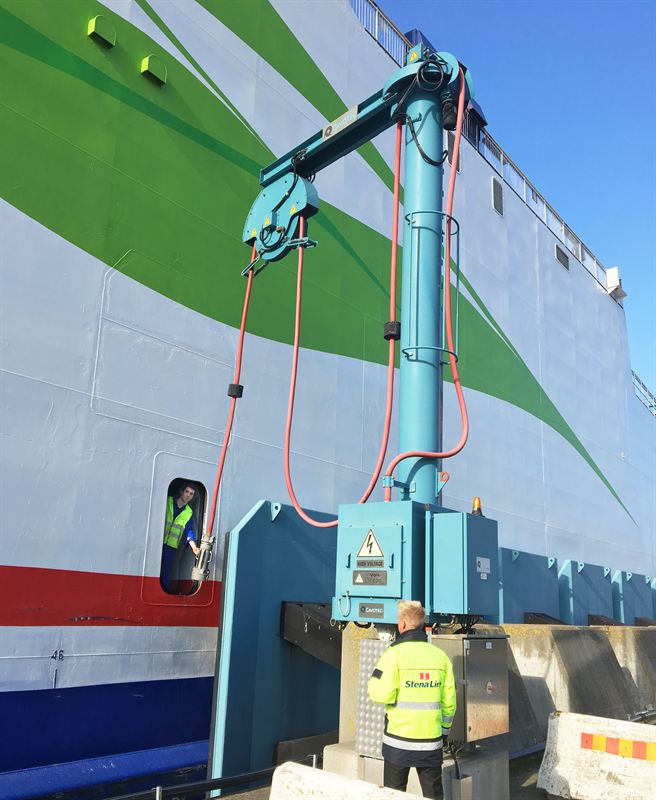Stena Line and the Port of Trelleborg inaugurate onshore power supply
As the first ferry company in the Port of Trelleborg, Stena Line will now be connecting up its two vessels M/S Skåne and M/S Mecklenburg-Vorpommern to the electricity grid during calls into port. This is an important step in Stena Line’s dedicated sustainability work, with one of the focus areas being to reduce emissions into the atmosphere.

Stena Line is a pioneer in this field, and since 1989 has been able to connect up a number of its vessels to the electricity grid when docked. At present four of Stena Line’s six ports in Sweden are now connected to the local electricity grid. Throughout Stena Line’s route network, 17 per cent of the ports are connected.
“We are delighted to have completed yet another onshore power supply connection together with the Port of Trelleborg. Sustainability is one of the cornerstones of our strategy and this is an important contribution to our efforts by reducing emissions and cutting down on noise in port. On many of our ferry routes our vessels call at locations close to cities and this makes it especially important to be able to shut off the engines when docked. Planning work is under way to enable us to connect vessels in more of our ports. The objective is for 25 per cent of the ports we use to have an electrical connection by 2020 and 75 per cent by 2030,” says Stena Line’s CEO Niclas Mårtensson.
At the ports where Stena Line has an onshore power supply vessels connect up to the electricity grid when docked for more than two hours. Stena Line’s vessels in Trelleborg are docked for more than two hours 10 times out of 16 per week and will connect up to the electricity grid at these times.
The connection means that the machinery on board is completely shut down, bringing emissions down to practically zero, and for maximum total environmental gain green electricity is used, which is also the case in Trelleborg. In 2016, all Stena Line’s electrical connections in port contributed to a reduction in CO2 emissions of 12,500 tons, which equates to the annual consumption of 6,500 average passenger cars.
Installation of electrical connections is a major investment, with the port generally paying for the onshore installation and the shipping company paying for onboard installation. The onshore equipment is protected against overload for a nominal load of 2.2 MW, which is equivalent to heating around 80 blocks of flats.
“It’s really great that Stena Line has decided to connect two of its vessels to the onshore power supply at the Port of Trelleborg. The work and planning for the installation has taken several years and the Port of Trelleborg received a grant from the EU for the investment, which will reduce both emissions and noise from docked vessels,” says CEO of the Port of Trelleborg Jörgen Nilsson.
For further information, please contact Jesper Waltersson, Press & Media Relations Manager, Stena Line, +46 704 85 85 32, or Agneta Nilsson, Manager Communication, Public Affairs & Funding, Port of Trelleborg, + 46 709 36 97 11.
About Stena Line
Stena Line is one of Europe's leading ferry companies with 37 vessels and 21 routes in Northern Europe. Stena Line is an important part of the European logistics network and develops new intermodal freight solutions by combining transport by rail, road and sea. Stena Line also plays an important role for tourism in Europe with its extensive passenger operations. The company is family-owned, was founded in 1962 and is headquartered in Gothenburg. Stena Line is part of the Stena AB Group, which has about 15 000 employees and an annual turnover of around 36,5 billion SEK.
Stena Line is setting course towards a more sustainable future by focusing on four key strategic areas based on the UN global goals for sustainable development. The four areas are Clean Energy, Sustainable Consumption, Life Below Water as well as Good Health and Well-Being. Within each focus area a number of specific and ambitious goals have been set for the short and long term.


